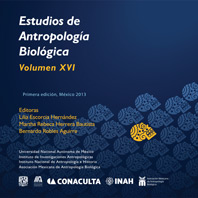Human biology of indigenous populations in Oaxaca: 1898 to the present
DOI:
https://doi.org/10.22201/iia.14055066p.2013.56764Keywords:
human biology, Oaxaca, growth, nutritional transition, diseasesAbstract
The “Oaxaca Project” analyzed growth of children and heights of adults across three major transitions (demographic, epidemiologic, nutritional) in a rural Zapotec community. It also documented the natural history of growth across intervals spanning high chronic undernutrition to the emergence of childhood overweight/obesity. The prevalence of childhood overweight and obesity has increased in the community, a signal of the nutritional transition. Diabetes is also increasing as is the frequency of other non-communicable, degenerative diseases.
Downloads
Downloads
Published
How to Cite
Issue
Section
License

http://creativecommons.org/licenses/by-nc-nd/4.0/


